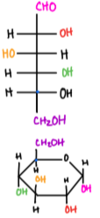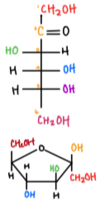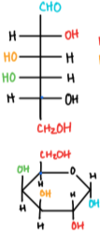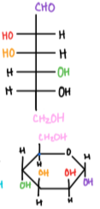Bioenergetics Flashcards
(181 cards)
Free energy
the energy available that can be converted to do work
Gibbs free energy (G)
maximum amount of non-PV work that can be performed within a closed system in a completely reversible process at a constant temperature and pressure. ◦ Indicates the total amount of chemical potential energy available in a system ◦ Reflects the overall favorability of the rxn that it describes
∆G equation
∆G = ∆H - T∆S
-∆G
spontaneous reaction = exergonic = will release energy that can be used to perform work in the surroundings
+∆G
non-spontaneous reaction = endergonic = require work to be put in to make them go forward
∆G vs ∆G˚
while ∆G = max free energy that can be produced, ∆G˚ = standard free energy change = the free energy that occurs if the concentration of reactants and products is 1 M; temp = 298K ∆G = this is the change of Gibbs free energy for a system. It is the max free energy that can be produced; applicable under nonstandard conditions ∆G˚ = this is Gibbs energy change for s system under standard conditions; it’s the free energy that occurs if the concentration of reactants and products is 1 M
Equilibrium; ∆G˚ =
Equilibrium- ratio of products:reactants = Keq ◦ ∆G˚= -RTlnKeq ◦ R = ideal gas constant (8.314 J/mol・K); T = temperature in K; Keq = equilibrium constant ◦ ↑ Keq value = more + ln value = more (-) ∆G˚
Not at equilibrium; ∆G =
∆G = ∆G˚ + RTlnQ R = ideal gas constant; T = temperature in K; Q = reaction quotient = the ratio of products to reactants @ a given time
Law of mass action:
the rate of the chemical rxn is directly proportional to the product of the activities or [reactants]; explains & predicts behaviors of solutions in dynamic equilibrium. Only includes gases & aqueous species.
Keq:
The ratio of products to reactants @ equilibrium; each species is raised to its stoichiometric coefficient Keq = products / reactants
∆H in a spontaneous/endothermic rxn
decreasing
∆H in a nonspontaneous/exothermic rxn
increasing
∆S in a spontaneous rxn
increasing
∆S in a nonspontaneous rxn
decreasing
When Q < Keq, ∆G
∆G < 0 (proceeds in the forward direction)
When Q > Keq, ∆G
∆G > 0 (proceeds in the reverse direction)
When ∆G˚ is — , what direction and what’s favored?
Forward direction, favors products w/ a Keq > 1
When ∆G˚ is +, what direction and what’s favored?
Reverse direction, factors reactants w/ a Keq < 1
Le Chatlier’s Principle
if an equilibrium mixture is disrupted, it will shift to favor the direction of the reaction that best facilitates a return to equilibrium
increase concentration of reactants shifts equilibrium….
right
decrease concentration of products shifts equilibrium…
right
increase concentration of products shifts equilibrium….
left
decrease concentration of reactants shifts equilibrium…
left
increase the temp of an endothermic reaction shifts equilibrium …
Right
















